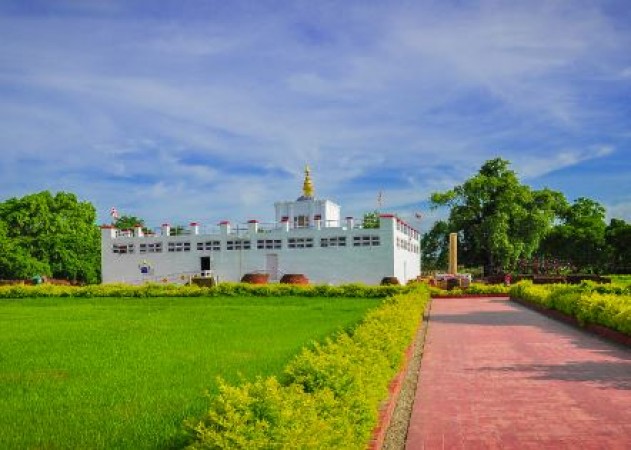
Lumbini is nestled in the southern part of Nepal, Lumbini stands as a sacred testament to the profound legacy of human spirituality and enlightenment. It is a place of pilgrimage for millions of Buddhists and seekers of knowledge from around the world, drawing them to its serene landscapes and historical significance. Lumbini's importance lies in its association with Siddhartha Gautama, who would later become known as Gautama Buddha, the founder of Buddhism. This pilgrimage site, filled with ancient monuments, temples, and archaeological wonders, provides a gateway to understanding the birth of a philosophy that has shaped the lives of countless individuals.
Lumbini is celebrated as the birthplace of Siddhartha Gautama, born in 623 BCE. This auspicious event is marked by the presence of the Sacred Garden, a UNESCO World Heritage Site, and the Maya Devi Temple. The latter enshrines the exact spot where Queen Maya Devi, Siddhartha's mother, is believed to have given birth. The significance of this site transcends religious boundaries, capturing the imagination of people seeking solace and insight.
Also Read: Kathmandu: A Cultural Tapestry of Nepal
The Sacred Garden encapsulates the ethereal beauty of Lumbini. This vast expanse, surrounded by monastic zones and peaceful pathways, contains numerous stupas, meditation areas, and a variety of Buddhist monasteries built by various nations, showcasing diverse architectural styles and cultural influences. The Ashoka Pillar, erected by the Mauryan Emperor Ashoka in the 3rd century BCE, stands as a silent witness to the site's historical importance.
The Maya Devi Temple is a centerpiece of spiritual reverence. Pilgrims from across the globe gather to offer prayers and pay homage to Queen Maya Devi, whose son's teachings would go on to shape the essence of Buddhism. The temple's archaeological importance is underscored by the discovery of ancient relics, including remnants of a brick wall and a sandstone sculpture of Maya Devi.
Surrounding the Sacred Garden are monastic zones, where Buddhist communities from different countries have constructed their own monasteries, reflecting unique cultural elements. These monasteries stand as living embodiments of global unity and devotion, fostering cross-cultural dialogue and understanding.
Also Read: Ruwanweli Maha Seya: Stupa of Significance
Lumbini is not merely a place of historical remembrance; it serves as a pilgrimage site for those seeking spiritual nourishment. The tranquil ambiance of the region invites visitors to engage in meditation, introspection, and the pursuit of self-discovery. The harmonious blend of natural beauty and spiritual significance offers a space for both reverence and reflection.
Lumbini has become a beacon of cultural exchange and understanding. As nations across the world have constructed their own monasteries, the region has evolved into a melting pot of diverse traditions and architectural styles. This harmonious coexistence highlights the shared reverence for Gautama Buddha's teachings and serves as a reminder of the unity that transcends geographical and cultural boundaries.
Efforts to preserve Lumbini's sanctity and historical importance are ongoing. Various international organizations, including UNESCO, collaborate with the Nepalese government to safeguard the site's heritage. These efforts include conservation, restoration, and educational initiatives aimed at ensuring that future generations can continue to experience the profound energy that Lumbini exudes.
Also Read: Temple of the Sacred Tooth Relic: Sri Lanka's Buddhist Heritage
Lumbini, with its rich historical tapestry and spiritual resonance, stands as a timeless testament to the power of human enlightenment and the enduring impact of a single individual's quest for truth. Its serene landscapes and historical treasures invite both pilgrims and tourists to immerse themselves in its aura of contemplation and unity. Lumbini's significance reverberates far beyond its geographical boundaries, serving as a universal symbol of humanity's shared pursuit of higher knowledge and inner peace.
Also Read: Edakkal Caves: A Glimpse into Prehistoric Art and Civilization
Illikkal Kallu: A Majestic Gem of Nature
Discover the Enchanting Beauty of Pachmarhi: Must-Visit Places and Attractions